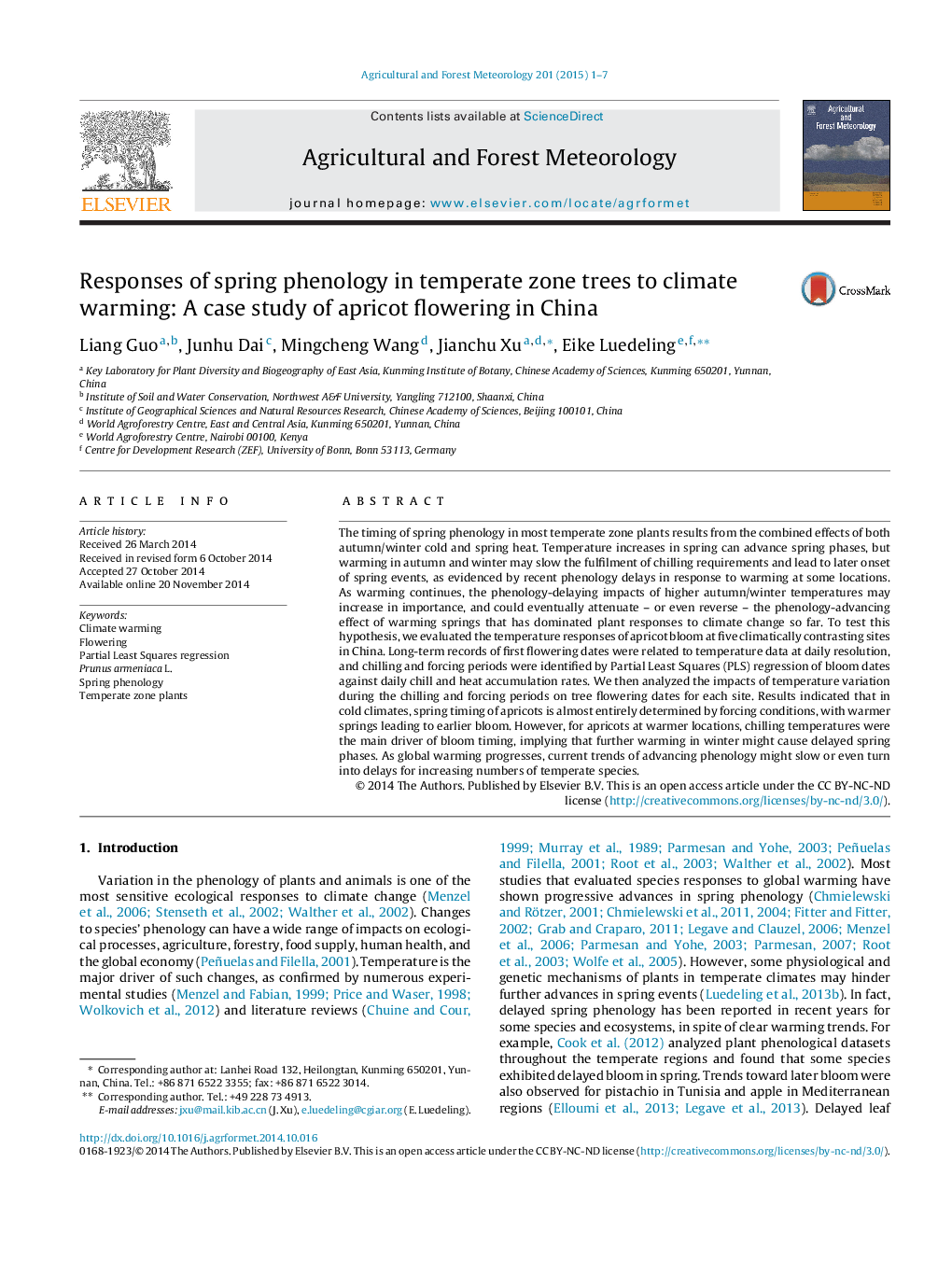| کد مقاله | کد نشریه | سال انتشار | مقاله انگلیسی | نسخه تمام متن |
|---|---|---|---|---|
| 6537384 | 158335 | 2015 | 7 صفحه PDF | دانلود رایگان |
عنوان انگلیسی مقاله ISI
Responses of spring phenology in temperate zone trees to climate warming: A case study of apricot flowering in China
ترجمه فارسی عنوان
پاسخ فنولوژی بهار در درختان معتدل به گرم شدن آب و هوا: مطالعه موردی گلدهی زردآلو در چین
دانلود مقاله + سفارش ترجمه
دانلود مقاله ISI انگلیسی
رایگان برای ایرانیان
کلمات کلیدی
موضوعات مرتبط
مهندسی و علوم پایه
علوم زمین و سیارات
علم هواشناسی
چکیده انگلیسی
The timing of spring phenology in most temperate zone plants results from the combined effects of both autumn/winter cold and spring heat. Temperature increases in spring can advance spring phases, but warming in autumn and winter may slow the fulfilment of chilling requirements and lead to later onset of spring events, as evidenced by recent phenology delays in response to warming at some locations. As warming continues, the phenology-delaying impacts of higher autumn/winter temperatures may increase in importance, and could eventually attenuate - or even reverse - the phenology-advancing effect of warming springs that has dominated plant responses to climate change so far. To test this hypothesis, we evaluated the temperature responses of apricot bloom at five climatically contrasting sites in China. Long-term records of first flowering dates were related to temperature data at daily resolution, and chilling and forcing periods were identified by Partial Least Squares (PLS) regression of bloom dates against daily chill and heat accumulation rates. We then analyzed the impacts of temperature variation during the chilling and forcing periods on tree flowering dates for each site. Results indicated that in cold climates, spring timing of apricots is almost entirely determined by forcing conditions, with warmer springs leading to earlier bloom. However, for apricots at warmer locations, chilling temperatures were the main driver of bloom timing, implying that further warming in winter might cause delayed spring phases. As global warming progresses, current trends of advancing phenology might slow or even turn into delays for increasing numbers of temperate species.
ناشر
Database: Elsevier - ScienceDirect (ساینس دایرکت)
Journal: Agricultural and Forest Meteorology - Volume 201, 15 February 2015, Pages 1-7
Journal: Agricultural and Forest Meteorology - Volume 201, 15 February 2015, Pages 1-7
نویسندگان
Liang Guo, Junhu Dai, Mingcheng Wang, Jianchu Xu, Eike Luedeling,
